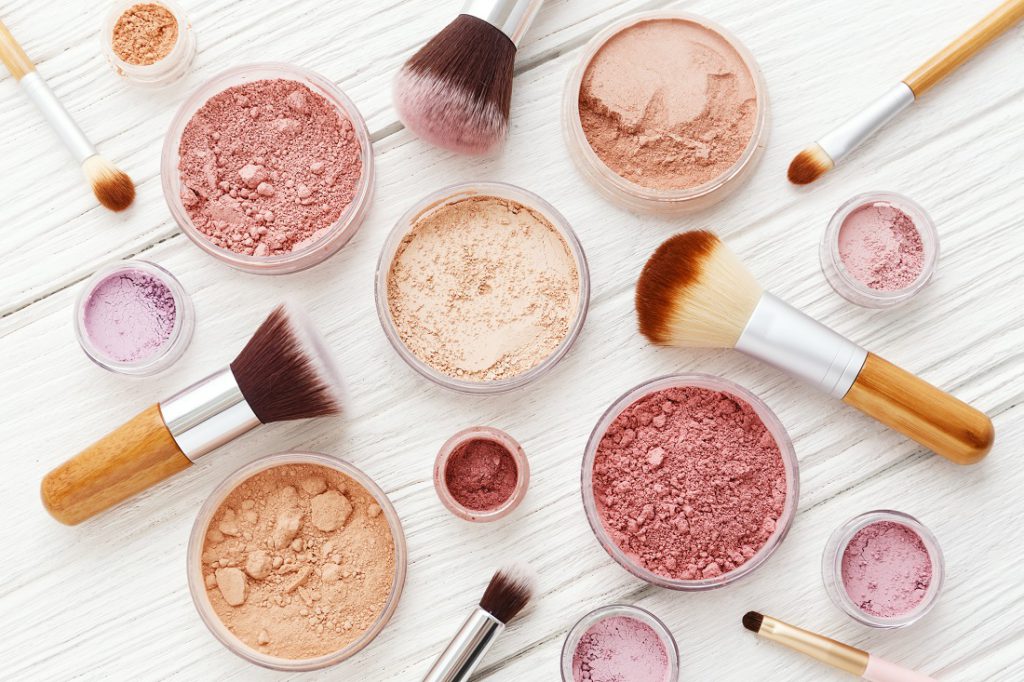You’ve heard it time and time again: You must wear sunscreen every day to protect your skin from the sun’s damaging ultraviolet (UV) rays. But if you’re a makeup-obsessed girl like me, who doesn’t leave the house without foundation and mascara on at the very least, you’ve probably struggled to find a way to incorporate this skin-saving staple into your daily beauty routine.
I’ve worried, “Will I break out? Will it make me look cakey? How do I reapply throughout the day without taking my makeup off?” I had a lot of concerns, but nixing sunscreen altogether for the sake of a good contour was not an option. Not only does sunscreen help prevent skin aging, but research also shows that regular daily use can reduce the risk of squamous cell carcinoma and melanoma, two types of skin cancer.
It may be tempting to forgo sunscreen and just purchase cosmetics with sun protection ingredients, but the experts caution against that. “Most cosmetic formulations lack enough protection against UVA rays, which are present year-round and can even travel through window glass,” says Amy Taub, MD, a dermatologist in Chicago. “UVA exposure has been linked to melanoma, as well as freckles, hyperpigmentation and wrinkles.”
After years of experimentation (not to mention a career spent working with great skin care brands and dermatologists!), here’s what I’ve learned:
SPF Moisturizer or Facial Sunscreen?
If you use a moisturizer, make sure it has sunscreen ingredients. There are many different formulations out there to suit almost everyone’s skin type and preferences. If you’re prone to acne, choose an oil-free product. Looking for a little bit of color? Try a tinted one. No matter what, if you’re relying on moisturizer for sun protection, it should have an SPF of 30 or higher and be labeled “broad spectrum,” which means it protects against UVA and UVB rays.
If you don’t use a moisturizer (or have a formula you love that doesn’t include sunscreen ingredients), look for a sunscreen that’s formulated specifically for the face. These tend to be more lightweight than traditional sunscreens and are often made to go underneath cosmetics (say goodbye to looking cakey!) If you use a facial sunscreen instead of a moisturizer, consider also using a makeup primer with hydrating properties.
After cleansing your face in the morning, apply your moisturizer or facial sunscreen. Don’t forget the tip of your nose, ears and neck, which are often forgotten and prone to sun damage.
Laying the Foundation
For added protection, opt for a foundation that contains an SPF of 30 or higher. Dr. Taub also recommends looking for a specific ingredient when browsing the makeup aisle: “It is best to use makeup or a BB cream with at least 5 percent zinc oxide,” she says. “I am a big believer in zinc oxide for optimal sun protection since it reflects both UVA and UVB rays off the skin.
Does Using Multiple Sunscreen Products Boost Protection?
Dr. Taub says that layering products that all contain sunscreen will not boost the amount of protection you’re receiving. (Meaning, SPF 30 moisturizer + SPF 30 foundation does not equal SPF 60 protection) “You will more likely just benefit from the highest SPF product you use,” says Dr. Taub. Still, applying multiple products with sunscreen ingredients will ensure that your entire face is protected and you won’t miss a spot.
Finishing Touches
After adding all your finishing touches (i.e: blush, bronzer, highlighter), set your makeup with a finishing powder or setting spray that also includes sunscreen ingredients. For reapplication throughout the day, Dr. Taub suggests using a powdered sunscreen on top of your foundation.
There you have it! You can now go about your day without worrying about harmful sun rays penetrating your skin or sacrificing your makeup. Take it from someone who frequents Sephora and hoards endless blush shades — you’ll thank me later.





